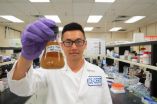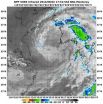(Press-News.org) Scientists in the middle of the status hierarchy, not those at the top or the bottom, are the first to work with easy-to-use commercial products. They are also the most prone to imitate their prior collaborators' use of such commercial kits. These are among the findings of a study of scientists-as-customers appearing in Marketing Science, a journal of the Institute for Operations Research and the Management Sciences (INFORMS).
Nonmonotonic Status Effects in New Product Adoption is by Yansong Hu of the University of Warwick and Christophe Van den Bulte of the University of Pennsylvania's Wharton School. It currently appears in the Articles in Advance Section of Marketing Science.
"Our findings suggest that high-status scientists need not be the most effective seeding points for new commercial research tools," says Dr. Van den Bulte. "Even though they exerted the greatest influence on their peers, high-status scientists were actually slower to convert to using convenient kits. So, for companies introducing new products, targeting marketing efforts exclusively towards high-status scientists in the hope that they will influence others may slow down rather than accelerate their products' acceptance. "
The study analyzed how quickly 8,259 life scientists, spread across the globe, started using commercial kits to perform site-directed mutagenesis, a type of genetic engineering, in the period 1988-1997. Though that research technique was developed in the 1970s, it remained cumbersome until 1988 when commercial kits appeared on the market, providing researchers with a proven set of materials and step-by-step instructions. Such kits allow life scientists to work faster, publish faster, and so improve their status.
Studying scientists as customers allows the study to measure status in two different ways: First, by how many times each scientist's work was cited by fellow researchers; and second, by how central each scientist was in the network of scientific collaboration. Studying scientists also allows researchers to measure the effects of status in a manner that is not confounded by differences in wealth or education.
The differences in scientists' behavior were rather large. The odds of a scientist in the top 30-40% of the citations hierarchy to start using a kit were about 50% greater than those of a scientist at the bottom 10% and about 100% greater than those of a scientist in the top 10%. The odds of a scientist in the top 40-50% of the citations hierarchy to start using a kit following the adoption by one additional prior collaborator were about twice those of scientists at the bottom 10% or the top 10%.
A similar pattern emerged when measuring status as being central in the network of scientific collaboration: Middle-status scientists were more likely to adopt the kits quickly and were more prone to social influence than either low or high-status scientists.
Experiments in social psychology provide an explanation for these findings. People of low status don't expect to improve their situation much by their actions whereas those of high status don't see the need to do so. As a result, people in the middle of the status hierarchy are most sensitive to opportunities and threats to their status.
"This work," says Dr. Van den Bulte, who teaches marketing at the Wharton School, "has some implications for firms and not-for-profit organizations marketing new products to customers other than scientists. First, when the product is subject to peer influence, they may be better off targeting not only high-status prospects who are influential but also middle-status prospects who are easier to convert quickly. This is especially so for products that help users increase their status, like the commercial kits we studied. Second, conflicting findings on the power of opinion leaders have come from studies assuming that everyone is equally influenceable or assuming that the higher one's status, the lower one's susceptibility to peer influence. Our findings indicate that a more nuanced approach may be necessary to understand who influences whom."
INFORMATION:
The studies' authors are members of the INFORMS Society for Marketing Science (ISMS). This research was made public in conjunction with the INFORMS Society for Marketing Science (ISMS). ISMS is a group of scholars focused on describing, explaining, and predicting market phenomena at the interface of firms and consumers.
About INFORMS
INFORMS is the leading international association for professionals in analytics and operations research (O.R.). INFORMS advances research, and develops and promotes best practices in analytics and O.R. through collaboration, knowledge sharing, and professional development. INFORMS helps business, government, and other organization professionals make better decisions to drive value to their organizations and society. Our certification program (CAP®), highly cited publications, educational meetings and conferences, continuing education, industry and process focused networking communities, competitions, and recognition provide professionals with the knowledge and connections they need to achieve ever greater value for their organizations. The INFORMS Society for Marketing Science (ISMS), a subdivision of INFORMS, is a leader in fostering the development, dissemination, and implementation of knowledge, basic and applied research, and science and technologies that improve the understanding and practice of marketing. Further information about INFORMS, analytics, and operations research is at http://www.informs.org or @informs and further information about the INFORMS Society for Marketing Science (ISMS) is at https://www.informs.org/Community/ISMS.
Mid-level scientists most likely to use new research tools, says study in INFORMS journal
Analyzing 8,000+ scientists as customers
2014-08-04
ELSE PRESS RELEASES FROM THIS DATE:
Animalistic descriptions of violent crimes increase punishment of perpetrators
2014-08-04
Describing criminals and criminal activities with animal metaphors leads to more retaliation against perpetrators by inducing the perception that they're likely to continue engaging in violence, a new Aggressive Behavior study suggests.
When surveying jury?eligible adults, investigators varied animalistic descriptions of a violent crime and examined its effect on the severity of the punishment for the act. Compared with non?animalistic descriptions, animalistic descriptions resulted in significantly harsher punishment for the perpetrator due to an increase in perceived ...
Evolutionary explanation for why some lessons more easily learned than others
2014-08-04
It's easy to guess why it doesn't take long to learn to avoid certain behaviors and embrace others. But how do we know what drives these predilections? A study led by Aimee Dunlap at the University of Missouri-St. Louis, and co-authored by University of Minnesota researcher David Stephens, offers insight into the evolutionary underpinning of animals' innate ability to quickly absorb critical life lessons.
Animals are flooded with stimuli, but survival often depends on their ability to form specific associations that enhance fitness while ignoring others entirely. Psychologists ...
Enhancing biofuel yields from biomass with novel new method
2014-08-04
RIVERSIDE, Calif. — A team of researchers, led by Professor Charles E. Wyman, at the University of California, Riverside's Bourns College of Engineering have developed a versatile, relatively non-toxic, and efficient way to convert raw agricultural and forestry residues and other plant matter, known as lignocellulosic biomass, into biofuels and chemicals.
The patent-pending method, called Co-solvent Enhanced Lignocellulosic Fractionation (CELF), brings researchers closer to solving the long elusive goal of producing fuels and chemicals from biomass at high enough yields ...
NASA catches the brief life of Tropical Storm Nakri
2014-08-04
The low pressure area known as System 96W struggled to organize for a week and finally became Tropical Storm Nakri on August 2 as the Suomi NPP satellite passed overhead. Nakri had a short life, however, as it dissipated the following day while approaching South Korea.
On Saturday, August 2, at 9 p.m. EDT, Nakri's maximum sustained winds were near 40 knots (46 mph/74 kph). At that time it was centered about 100 nautical miles southeast of Kunsan Air Base, near 35.0 north and 125.0 east. It was moving to the north at 14 knots (16.1 mph/21.9 kph).
When NASA-NOAA's Suomi ...
NASA sees Typhoon Halong's eye wink
2014-08-04
As Super Typhoon Halong tracks north through the Northwestern Pacific Ocean, NASA's Aqua and Terra satellites have seen the powerful storm appear to wink at space as it developed and "opened" an eye and then close its eye as clouds moved over it. That wink appears to be a sign of eyewall replacement in the powerful storm.
On August 2 at 01:45 UTC (August 1 at 9:45 p.m. EDT) NASA's Terra satellite captured a visible image of a wide-eyed Super Typhoon Halong moving through the Northwestern Pacific Ocean. At the time of the image, Halong was a powerful Category 5 Super Typhoon ...
No-power Wi-Fi connectivity could fuel internet of things reality
2014-08-04
Imagine a world in which your wristwatch or other wearable device communicates directly with your online profiles, storing information about your daily activities where you can best access it – all without requiring batteries. Or, battery-free sensors embedded around your home could track minute-by-minute temperature changes and send that information to your thermostat to help conserve energy.
This not-so-distant "Internet of Things" reality would extend connectivity to perhaps billions of devices. Sensors could be embedded in everyday objects to help monitor and track ...
NASA's IBEX and Voyager spacecraft drive advances in outer heliosphere research
2014-08-04
San Antonio -- Aug. 4, 2014 -- Scientists yesterday highlighted an impressive list of achievements in researching the outer heliosphere at the 40th International Committee on Space Research (COSPAR) Scientific Assembly in Moscow.
"Between NASA's Voyager and IBEX missions, it's an incredible time for outer heliospheric science," says Dr. Dave McComas, IBEX principal investigator and assistant vice president of the Space Science and Engineering Division at Southwest Research Institute, who also will be recognized with a 2014 COSPAR Space Science Award at the assembly. "Ten ...
Children in immigrant families more likely to be sedentary
2014-08-04
Immigrant children from all racial and ethnic backgrounds are more likely to be sedentary than U.S.-born white children, according to a new study by sociologists at Rice University. The researchers said their findings should remind pediatricians and parents of children in immigrant families to encourage physical activity.
The research revealed that children of immigrants from all racial and ethnic backgrounds have lower levels of physical activity than U.S.-born white children, even when adjustments are made for socio-demographic and neighborhood characteristics. A low ...
New tools advance bio-logic
2014-08-04
Researchers at Rice University and the University of Kansas Medical Center are making genetic circuits that can perform more complex tasks by swapping protein building blocks.
The modular genetic circuits engineered from parts of otherwise unrelated bacterial genomes can be set up to handle multiple chemical inputs simultaneously with a minimum of interference from their neighbors.
The work reported in the American Chemical Society journal ACS Synthetic Biology gives scientists more options as they design synthetic cells for specific tasks, such as the production of ...
GW researcher reveals how amphibians crossed continents
2014-08-04
There are more than 7,000 known species of amphibians that can be found in nearly every type of ecosystem on six continents. But there have been few attempts to understand exactly when and how frogs, toads, salamanders and caecilians have moved across the planet throughout time.
Armed with DNA sequence data, Alex Pyron, an assistant professor of biology at the George Washington University, sought to accurately piece together the 300-million-year storyline of their journey.
Dr. Pyron has succeeded in constructing a first-of-its-kind comprehensive diagram of the geographic ...
LAST 30 PRESS RELEASES:
For teens, any cannabis use may have impact on emotional health, academic performance
School meals could unlock major gains for human and planetary health
Menopause hormone therapy does not appear to impact dementia risk
Signature patterns of brain activity may help predict recovery from traumatic brain injury
Dresden study uncovers new key mechanism in cancer cells
New species are now being discovered faster than ever before, study suggests
Cannabis-based products show limited short-term benefit for chronic pain, with increased risk of adverse effects
Cannabis products with more THC slightly reduce pain but cause more side effects
Clearing the brain of aging cells could aid epilepsy and reduce seizures
Brain injuries linked with potential risk of suicide, new study finds
New technique lights up where drugs go in the body, cell by cell
New study finds movement of fishing fleets can reveal shifts in marine ecosystems
Embargoed: New evidence points to potential treatment for vascular dementia
Study uncovers disrupted brain balance in alcohol dependence
Working in groups can help Republicans and Democrats agree on controversial content moderation online
Structural findings reveal how distinct GPCR ligands create different levels of activation
Anything-goes “anyons” may be at the root of surprising quantum experiments
UC review: Maximizing workplace opportunity for veterans
From generation to complex control: Metasurfaces make perfect vortex beams "within reach"
Thin-film lithium niobate-based detector: recent advances and perspectives
Exploring why some people may tend to persistently make bad choices
How cells balance their protein levels
Nirsevimab vs RSVpreF vaccine for RSV–related hospitalization in newborns
Effectiveness and impact of maternal RSV immunization and nirsevimab on medically attended RSV in US children
AI gives scientists a boost, but at the cost of too many mediocre papers
Next-generation vision model maps tree growth at sub-meter precision
Genes aren’t destiny for inherited blindness, study shows
MIT study: High-fat diets make liver cells more likely to become cancerous
Exposure to multiple fine particulate matter components and incident depression in the US Medicare population
Risk of burdensome health care spending over time in the US
[Press-News.org] Mid-level scientists most likely to use new research tools, says study in INFORMS journalAnalyzing 8,000+ scientists as customers




